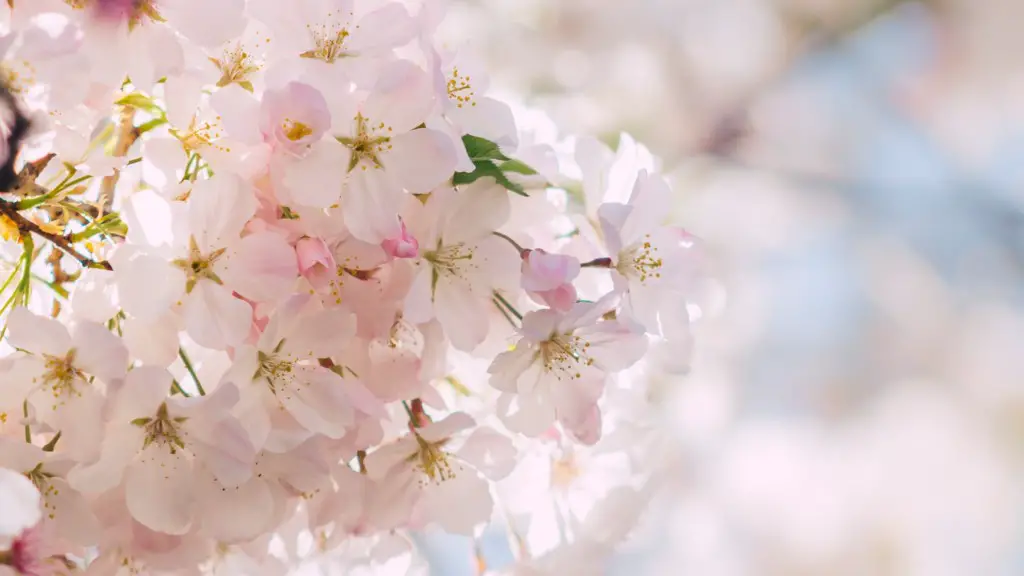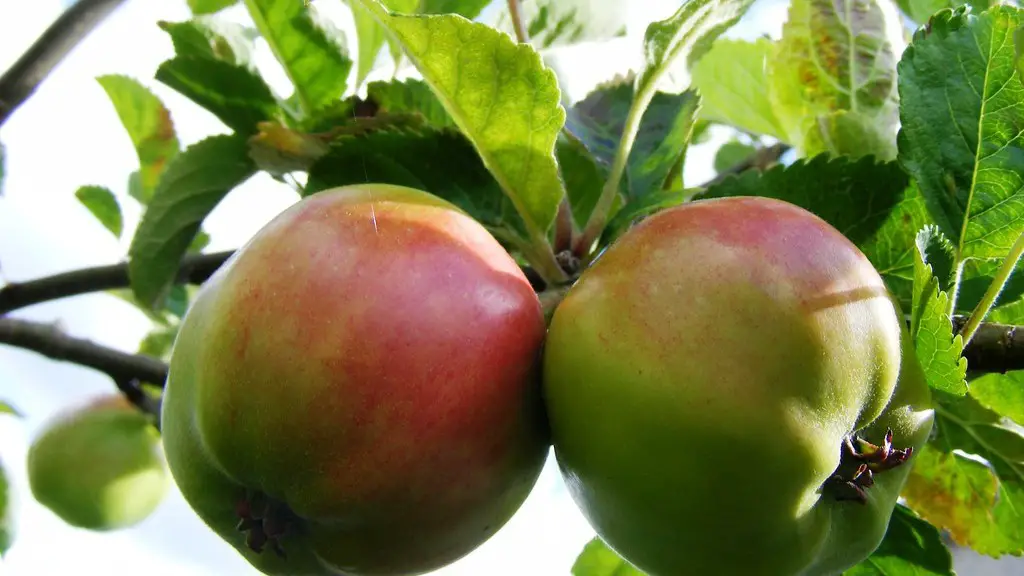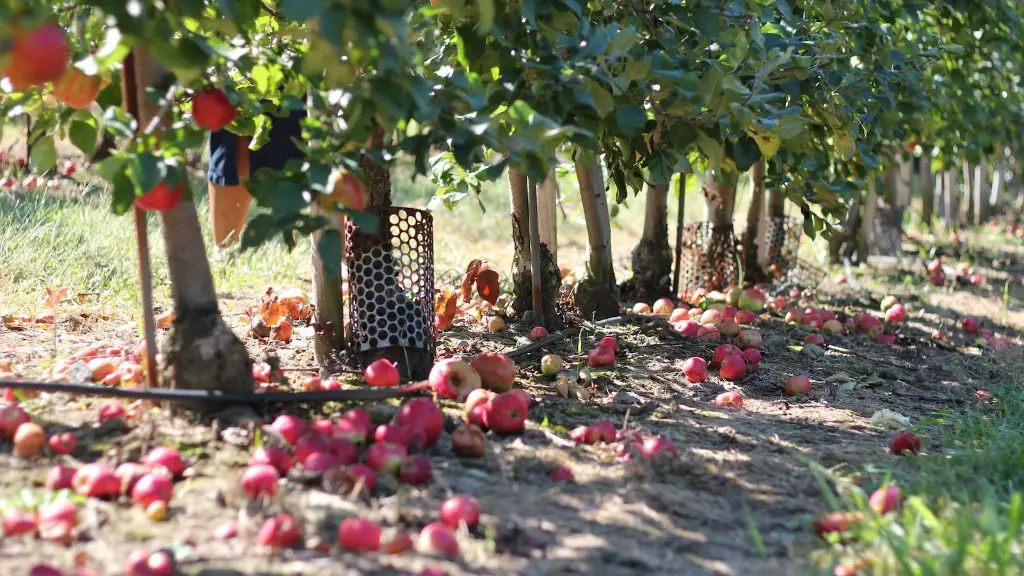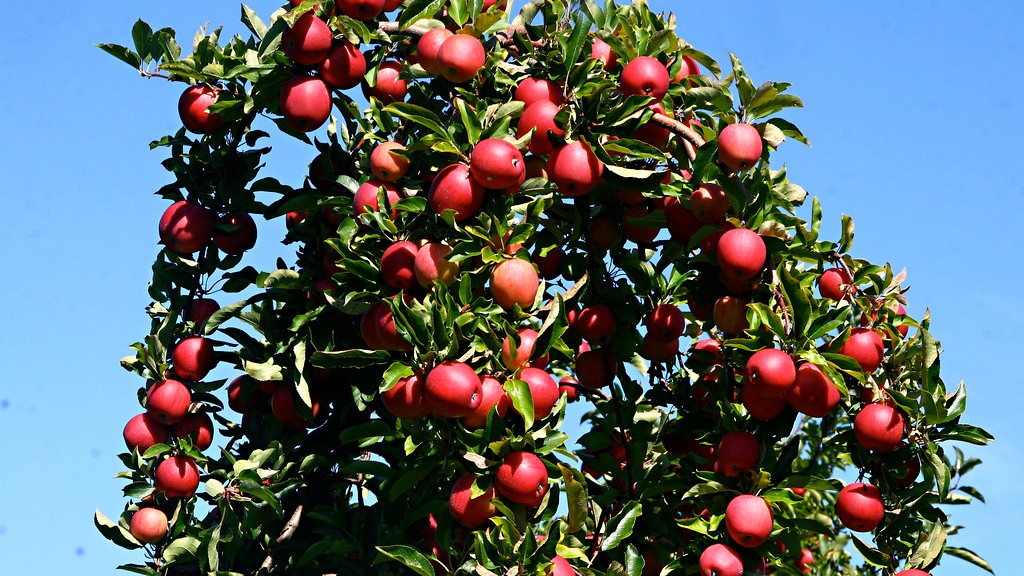The cherry tree is a large and beautiful tree, relatively common in temperate climates. Native to many parts of the world, it has been cultivated for centuries as an ornamental tree as well as for its fruit. Today, cherry tree cultivation remains popular due to its attractive blossoms, sweet flavor, and many uses in cooking and baking.
Cherry trees belong to the prunus family and include both sweet and tart varieties. They are divided into two major types: stone fruits and pome fruits. Stone fruits include the sweet varieties of cherry, while pome fruits include the tart varieties. Both types have a long history in traditional cultures and have been cultivated for centuries.
Cherry trees are characterized by their fragrant pink, white or yellow flowers that bloom in hues ranging from deep red to light pink. The fruits, which come in shades of red, yellow, or orange, contain a single large seed. The wood of the cherry tree is prized for its strength and durability, often used in the making of furniture, cabinets, and other woodwork.
The cherry tree is commonly used in landscaping and can be seen in yards and parks throughout the world. The fruits of the cherry tree are a popular ingredient in desserts, as well as in preserves, jams, and juices. Sweet cherries are also a popular snack food. In addition, the flowers and leaves of the cherry tree are used in some traditional medicinal practices.
Cherry tree cultivation requires careful pruning and trimming, as the trees are notorious for growing too large and becoming difficult to manage. In addition, the trees are vulnerable to infestations of various pests, such as aphids and scale insects. For this reason, growers often install nets and other protective measures to prevent infestations.
When caring for a cherry tree, it is important to water regularly and provide plenty of sunshine. The tree is also susceptible to fungal diseases and drought, so it is important to provide adequate protection. For optimal growth, cherry trees should be fertilized in spring and summer. Pruning should be done annually to keep the tree healthy and promote strong growth.
Cherry trees are a popular ornamental tree, valued for their beauty and for their delicious fruit. Although they require some care and maintenance, the rewards of a healthy, thriving cherry tree are worth the effort.
Varieties
The most popular sweet and tart cherry varieties grown in the United States include Bing, Rainier, Lapin, Juliet, and Montmorency. Sweet cherries are firmer and juicier than tart cherries, and tend to have a mellower flavor. Tart cherries, which are high in vitamin C and other antioxidants, have a more acidic and sour taste. Both types are popular for cooking and baking, and for making jams, jellies, preserves, and juices.
Sweet cherry trees are typically taller, reaching heights of up to 30 feet, while tart cherry varieties are more compact and can reach heights of up to 20 feet. The trees bloom in spring, with the flowers appearing in clusters of three or more. The fruits will ripen to a deep red or yellow color over the summer months and can be picked when they are ripe.
When growing cherry trees, it is important to consider the climate. Some varieties require warm, humid conditions to thrive, while other varieties thrive in colder climates. Additionally, cherry trees require full sun and well-drained soil in order to produce high-quality fruit.
Harvesting
When the cherries are ripe, they can be easily picked by hand. Before harvesting, it is important to remove any diseased or damaged fruit to help prevent the spread of disease. If the cherries are not picked at the right time, the flavors and nutrients can be lost. Cherries are also highly perishable and must be stored properly if they are not consumed immediately.
Cherries can be frozen, canned, or dried for long-term storage. Additionally, sweet cherries can be converted into fruit wines, jams, and jellies, or used in baked goods. Tart cherries can be used in savory dishes, pies, and jams, or for pickling.
Diseases & Pests
Cherry trees are vulnerable to various diseases and pests, such as leaf spot, powdery mildew, aphids, and scale. To prevent infestations, it is important to inspect the tree regularly and prune away any diseased or damaged material. During the fruit-bearing season, it is also important to spray the tree with an insecticidal soap to ward off pests.
In some cases, the use of fungicides or disease-resistant varieties of cherries can be beneficial. Additionally, cherries can be sprayed with a copper fungicide or a bordeaux mixture to prevent common diseases. Finally, keeping the area around the tree well-mulched and weed-free can help prevent fungal infections.
Nutritional Benefits
Cherries are an excellent source of many nutrients, including vitamin C, iron, potassium, and dietary fiber. They also contain a variety of antioxidants, which can help protect against disease and inflammation. Studies have shown that cherries can help lower cholesterol and may reduce the risk of certain forms of cancer and heart disease. Additionally, the high levels of vitamin C in cherries can help boost immunity and ward off colds and other illnesses.
Cherry juice is especially nutritious, as it is rich in antioxidants, vitamins, and minerals. Studies have shown that drinking cherry juice can help reduce inflammation and pain associated with arthritis, gout, and other conditions. Additionally, the antioxidants in cherry juice can help protect against certain forms of cancer and other diseases.
Uses
Cherries have an array of uses in both cooking and medicinal preparations. They can be eaten raw, juiced, cooked, and preserved as jams and jellies. Sweet cherries and tart cherries also have different culinary uses; sweet cherries are most often used in desserts and baked goods, while tart cherries are used for savory dishes, sauces, and flavorings. The leaves and flowers of the cherry tree can also be used in making herbal teas, tinctures, and other medicinal preparations.
Cherry wood, which is strong and durable, is also highly prized for furniture, cabinets, and other woodwork. Lining shelves and bookcases with cherry wood can help bring an air of sophistication and class to any home. Additionally, the blossoms of the cherry tree are prized for their beauty and fragrance, making them a popular choice for bouquets, floral arrangements, and decorations.
Health Risks & Side Effects
While cherries and their juice are generally considered to be healthy, eating too many can lead to stomach upset and other digestive issues, such as diarrhea and excessive gas. Additionally, cherry pits can contain trace amounts of cyanide, so they should not be consumed in large quantities. Eating too many cherries can also cause migraines and other headaches, and people with certain allergies may have an adverse reaction to cherries or cherry juice.
When consuming cherries or cherry juice, it is important to monitor intake and be aware of any side effects or adverse reactions. Those with allergies or existing health conditions should consult their doctor before consuming cherry products. Additionally, it is important to drink plenty of water to prevent dehydration, as cherry juice can act as a natural diuretic.





